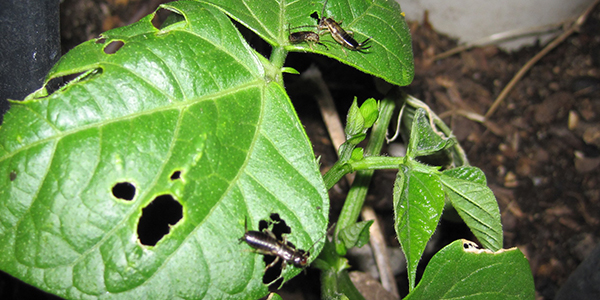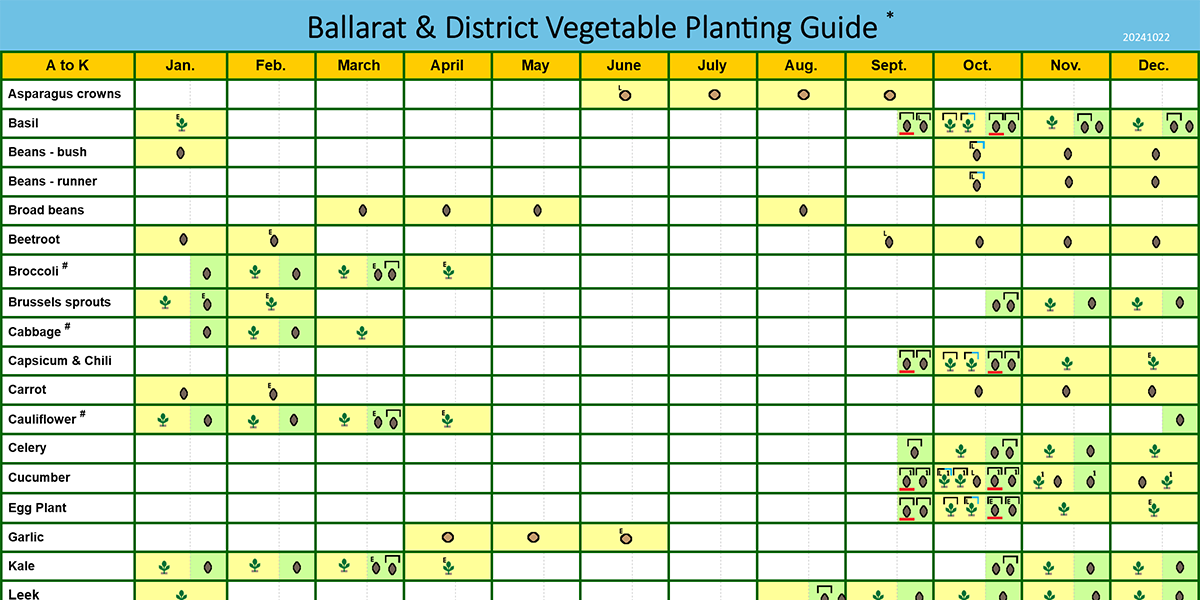There is a common misconception that seeds cannot be saved from F1 hybrid vegetables. While saving seeds from vegetables grown from hybrid seeds is more difficult than saving open pollinated seeds it can be done if you are careful. This page looks at F1 hybrid vegetable seeds and how best to save them.
F1 stands for Filial 1, the first filial generation seeds/plants resulting from a cross-mating of distinctly different parental types.
Typically a vegetable variety producing large sized fruit with good flavour is crossed with another variety with attributes of vigour and/or disease resistance. The seeds from the resulting cross (the resultant F1 variety) have at least some of the positive attributes of both the parent plants. Though note that this is a very simplified version of how F1 hybrid seeds are produced.
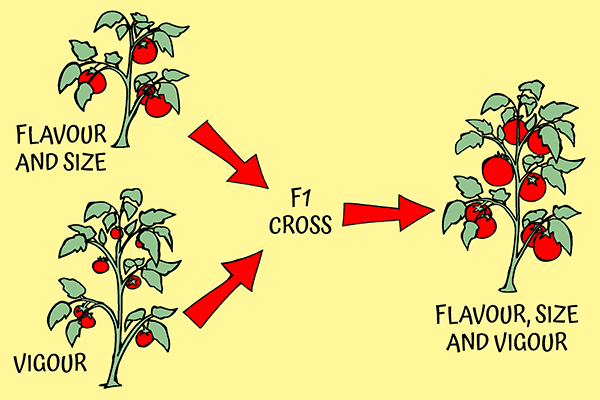
Illustration of how F1 seeds are produced.
The characteristics of seeds saved from a vegetable plant grown from an F1 seed will vary depending on a number of factors. What type of pollination method (self-pollination, wind or insect cross pollination) and the gene characteristics of individual plants all have a impact on the resultant saved seeds.
Though typically, the genes of one of the two vegetables crossed to create the original F1 seeds will be more dominant than the other vegetable’s genes. Over successive savings of seeds from that original F1 grown vegetable the genes of the dominant plant gradually come to dominate the characteristics of the resultant saved seeds.
It is not an on/off switch, the changes are usually gradual, but eventually the characteristics of the vegetable grown from successive generations of saved F1 plant seeds will take on the appearance of the plant with the dominant genes.
About fifteen years ago I began saving seeds from the Sungold F1 tomato. This plant produces large cherry tomatoes with exceptionally high sugar content. It was very productive over an extended period and resistant to Verticillium and Fusarium wilt.
The first seeds I saved seemed identical to the parent F1 seeds, but with each successive generation of the seeds that I saved the resultant tomatoes gradually became smaller until they were less than half the size of the original F1 tomatoes. At that point I discarded the seeds.
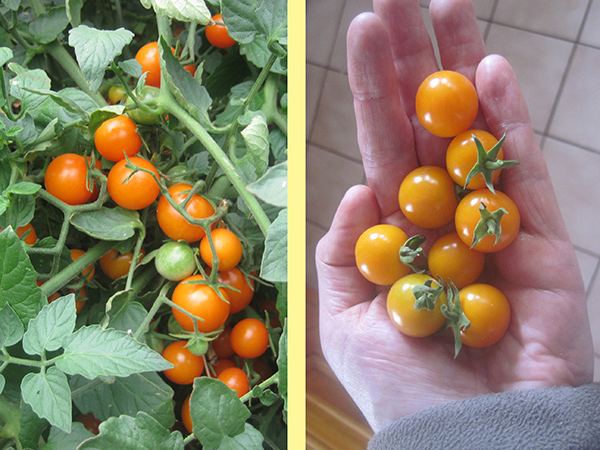
Sungold F1 tomato fruit. I saved seeds from these tomatoes for several years, until the size of the fruit became too small.
The best way to save seeds from F1 vegetables is to treat them in a similar fashion to open pollinated vegetables that require insect cross pollination to produce fertile seeds. Being:-
- Save seeds from the F1 vegetable using whatever seed saving method suits that type of vegetable.
- Grow one or two plants using the saved F1 seeds in the following season, but at the same time grow some more plants using the original F1 seeds.
- If the resultant plants grown from the saved F1 plant seeds are similar in taste and appearance to the original F1 grown plant then continue to use that batch of saved F1 plant seeds in subsequent years until the use by date for that variety of vegetable has passed, (E.g. five years for pumpkin and tomato).
- If the resultant plants grown from the saved F1 plant seeds do not resemble the original parent plant, then discard the seeds and try again.
Note that the results may vary wildly, especially if the F1 hybrid seed is from a vegetable variety that is insect cross pollinated (such as pumpkin) as the resultant saved seed may have been cross pollinated with an open pollinated variety of the same vegetable, thereby introducing another set of genes to the genetic makeup of the saved seeds.
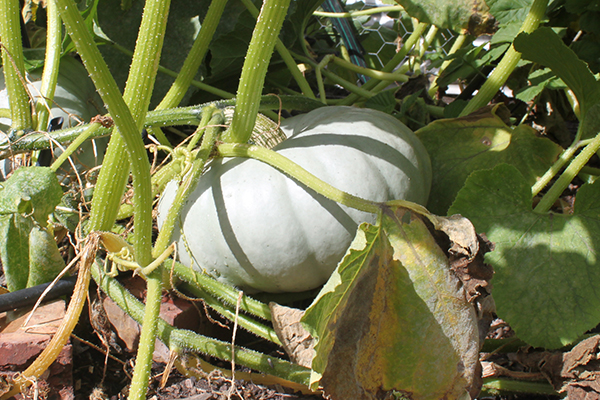
This pumpkin was grown from seeds saved from a Yates Hybrid Grey Crown pumpkin. The pumpkins grown from these saved seeds were identical to the original parent plant's pumpkin. The seeds were used until they had passed their use by date.
F1 seeds are not terminator seeds*, every vegetable I have grown using seeds saved from an F1 hybrid vegetable has produced a fertile crop. And usually the first generation of those saved seeds produces vegetables that are either indistinguishable or very similar to the vegetables grown using the original F1 seeds. It is certainly worth experimenting with saving F1 hybrid seeds.
* A terminator seed is one that produces sterile plants, used in some genetically modified crops so that a new supply of seeds must be bought every year. There currently is an international moratorium on the use of Terminator technology (as of April 2022) and a number of countries have banned them outright. As far as I know there are no terminator vegetable seeds sold commercially in Australia.


